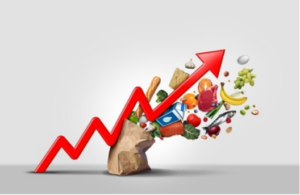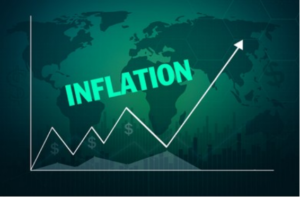In the intricate dance of economic indicators, inflation takes center stage as a pivotal measure of how prices evolve over time. The Consumer Prices Index (CPI), carefully curated by the Office for National Statistics (ONS), paints a picture of the changing costs of a selected “basket of goods” and services. Recently, however, the economic stage witnessed an unexpected twist as inflation surged to 4% in the year to December, defying analysts’ predictions of a marginal fall.
The uptick from November’s 3.9% raised eyebrows, especially considering that inflation had previously experienced a sharp decline, reaching its lowest point in over two years. Economists had anticipated a drop to 3.8%, but the reality proved otherwise. The CPI, a vital metric in understanding the fluctuation in the prices of essential goods and services, is crucial for policymakers, businesses, and consumers alike.

The surprise surge in inflation, according to the ONS, was attributed to a significant increase in tobacco and alcohol prices. Recent tax hikes on tobacco products, following the Autumn Statement, contributed to a staggering 12.9% rise in prices for these commodities in December compared to the previous month.
Interestingly, while overall inflation has retreated from its peak of 11.1%, the prices in stores are not experiencing a decline. Instead, they continue to ascend, albeit at a slightly slower pace. Fuel prices, in contrast, witnessed a notable decrease of 10.8% in the year to December, offering a multifaceted view of the economic landscape.
Food inflation, a critical component of the CPI, reported an annual rate of 8%, signaling a retreat from its 45-year high of 19.2% in March 2023. Core inflation, which excludes volatile categories such as food and energy, remained steady at 5.1%. These nuances highlight the complexity of the inflationary landscape, revealing the interplay of various factors that shape the overall economic scenario.
The surge in the inflation rate, now double the Bank of England’s 2% target, prompts questions about the potential for interest rate cuts. Despite a slight moderation in inflation, concerns arise about the timeline for the Bank of England’s first base rate cut. Ben Thompson, Deputy CEO of Mortgage Advice Bureau, suggests that if inflation persists, the wait for a rate cut might be prolonged.
The ramifications of inflation are not confined to interest rates; they extend to everyday expenses for consumers. Broadband and mobile providers, for instance, often use the December CPI figure to determine bill increases starting from April. Richard Neudegg, director of regulation at Uswitch, estimates that UK consumers may face an additional expenditure of £85.5 million per month on broadband and mobile bills, translating to an average individual cost increase of £27.19 for broadband and £24.23 for mobile bills annually.

Grant Fitzner, chief economist at the ONS, sheds light on the dynamics behind the recent inflationary trend. He attributes the uptick in December to rising tobacco prices due to duty increases, which were partially offset by declining food inflation. Additionally, he notes that factory gate prices have seen little change, while raw material costs remain lower than a year ago, offering insights into the multifaceted nature of inflationary pressures.
Chancellor Jeremy Hunt emphasizes the need to adhere to the economic plan, drawing parallels with inflation trends in the US, France, and Germany. While acknowledging that inflation does not follow a linear trajectory, Hunt underscores the importance of staying the course to control borrowing and promote growth through competitive tax levels.
Understanding inflation involves recognizing its impact on individual items over time. If a product that cost £1 last year now costs £1.03, the inflation rate for that specific item is 3%. The CPI provides an average, considering a basket of goods and services that are regularly updated by the ONS to reflect changing consumer trends.
The link between inflation and interest rates is a crucial aspect of economic policy. The Bank of England had previously raised interest rates in an attempt to curb inflation. The logic behind this approach is that higher interest rates make borrowing more expensive, leading to reduced spending and, consequently, lower demand and prices. However, this strategy has led to increased mortgage payments for millions of homeowners, as the base rate rose from 0.1% in December 2021 to 5.25%, remaining unchanged in the last three Bank of England meetings.

The puzzle of why inflation has decreased significantly since its peak in 2021 can be unraveled by examining the contributing factors. The initial rise in inflation was driven by higher energy and food costs, spurred by increased demand post-Covid and exacerbated by the Russian invasion of Ukraine.
In conclusion, the recent surge in inflation adds complexity to the economic narrative, prompting a closer examination of its drivers and potential consequences. The interplay of factors such as tax hikes, changes in commodity prices, and global events underscores the intricate nature of inflation. As consumers brace for potential cost increases, policymakers face the delicate task of balancing economic stability and growth in the face of evolving inflationary pressures.
Disclaimer:
The information provided in this blog is for general informational purposes only and should not be considered as financial or investment advice. The content reflects the author’s opinions at the time of writing and may not necessarily represent the views of any organization or institution. Readers are advised to consult with a qualified financial advisor or conduct their own research before making any financial decisions. The author and the platform shall not be held responsible for any losses or damages resulting from the use of the information presented in this blog.



